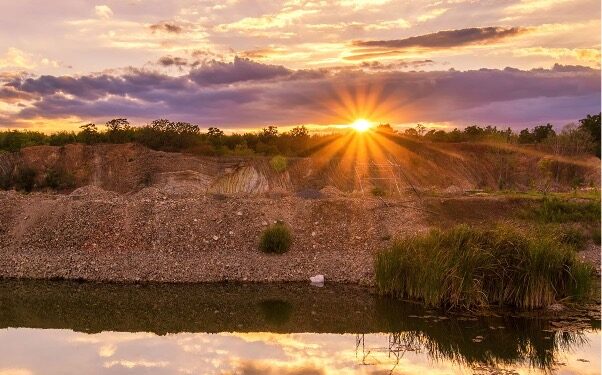Auric Mining Limited (ASX: AWJ) has received “significant” assays from recently completed drilling at the Chalice West Project near Higginsville-Widgiemooltha in Western Australia.
The project contains widespread, thick clay- hosted rare earth element (REE) mineralization. The drilling programme was completed on 22 November 2022 with 227 Air Core holes drilled for 7,227m.
“These REE results from our first drilling programme are outstanding. The shallow extensive REE-in-clay results have resulted in three zones being identified, the largest corresponding with a seven km long magnetic feature in the south-east of the project area,” Managing Director, Mark English, said.
“These results present a fantastic opportunity for Auric. There is a lot more work to be done, particularly to close the spacings in the 7km system, drill the prominent magnetic feature at the centre of the project, expand the drilling in the NW and southern parts of the project. This drilling programme represents a very small proportion of the 408sq. km project area.”
Mr English said the final results substantially expand the area of elevated REE hosted in clays to include a series of wide-spaced reconnaissance holes in the northwest of E15/1801 as well as a second reconnaissance traverse in the centre of the tenement, extending south into E63/2199.
The current results reveal anomalous REE values from clay and BOH samples with up to 3,323ppm TREO (total rare earth oxide) complementing previously reported high- grade intervals at 11,038ppm (1.1 wt.%) TREO.
Significant drill intersections with TREO >500ppm over a width of 4.0m or more were discovered in 15 new holes taking the total number from the programme to 25 holes. Grades range up to 1,583ppm TREO for a 6m interval in AAC0345 with a single one-metre interval of 3,323ppm TREO. Notably, the proportion of valuable magnetic rare earth oxides (MREO; sum of Nd, Pr, Tb, and Dy oxide) is >30% for the interval at AAC0345.
The majority of analyzed intervals have a MREO proportion of well above 20% of the TREO grade.
Mr English said Chalice West is enriched in highly sought-after REE metals used in permanent magnets for wind energy and electric mobility.
Clay-hosted REEs
Underlying bedrock (e.g. granite) is the primary source for REEs for clay-hosted REE mineralization. During extensive weathering of granite and breakdown of feldspar to clay minerals (e.g. halloysite and kaolinite), REEs from the granite are retained in the regolith profile and can be adsorbed to the surface of the clay minerals or form secondary REE minerals. This process leads to REE enrichment from primary granite to its weathering product. The targeted horizon is therefore the weathered profile above or adjacent to REE-rich bedrock.
Clay-hosted REE deposits are targeted for exploration because they typically have low Th and U concentrations, and REEs may be extracted via weak acids or ionic solutions. Therefore, REE concentrations in commercially extracted clay-hosted deposits can be low — typically in the range of 500–2000ppm TREO (Borst et al., 2020) The lower grade is largely offset by easier mining and lower processing costs.
Chalice West is underlain by Yilgarn Craton Granite (A-g-Y) and Burra Monzogranite (A-br-gm) based on the 1:100,000 Interpreted Bedrock Geology map by GSWA. Detailed logging of bottom-of-hole samples revealed magnetic monzogranite and ultramafic bedrock geology, which can both contribute REEs to the weathered profile. Further drilling will define the extent of the mineralization.
For further information please visit: https://www.auricmining.com.au/












